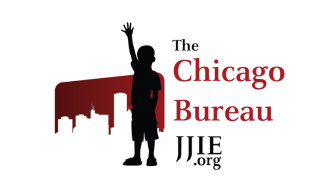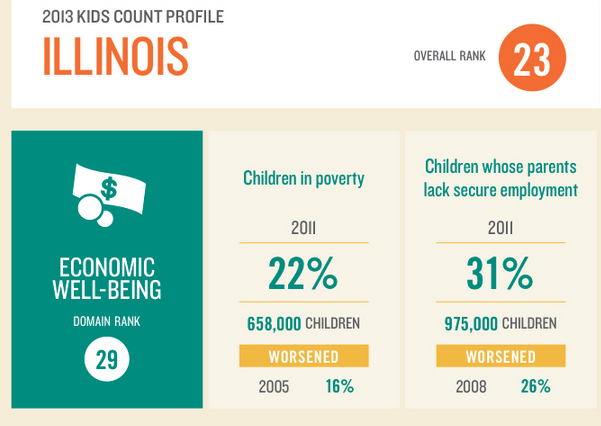 Illinois is ranked 23rd overall for child well-being in the Annie E. Casey Foundation’s 2013 KIDS COUNT Data Book, a widely cited gauge of the nation’s care of children that looks at four categories to determine each state’s status.
Illinois is ranked 23rd overall for child well-being in the Annie E. Casey Foundation’s 2013 KIDS COUNT Data Book, a widely cited gauge of the nation’s care of children that looks at four categories to determine each state’s status.
Illinois, which fell two notches from 21st in the rankings last year, placed among the top 15 in the “Education” and “Health” categories, which incorporate factors like “children not attending preschool” and “children without health insurance,” according to the data released Thursday.
However, the state falls in the bottom half for the other two areas, ranking 29th in both the “Economic Well-Being” and “Family and Community” categories.
North Dakota placed first in the overall category, with Mississippi and New Mexico falling at the bottom.
The annual publication analyzed data from 2005 to 2011 based on 16 indicators that fall under the headings: Economic, Education, Health, and Family and Community.
The child poverty rate in Illinois, according to a report issued by the nonprofit advocacy group Voices for Illinois Children, rose to nearly 22 percent in 2011. This falls just below the national average for child poverty rate of 23 percent, 16.4 million kids. In 2011, 12 percent of children in Illinois had at least one unemployed parent, according to the Kids Count Data Center, while before the recession in 2007, just 6 percent did.
Three trends emerged from the 2013 report: the lingering effects of the economic recession, increasing disparities between children based on income levels and family structures, and the disproportionate ways in which young children are affected by these “negative trends.”
Despite the overall worsening economic condition of children across the nation, education and health have improved.
“We often hear that our public education system is failing,” the report begins, “but the reality is more complex.”
National math and reading scores, for example, have improved over the years for “students of all races and income levels.” When controlling for poverty levels, the United States ranks highly on an international scale. Looking at achievement levels in schools where fewer than 10 percent of the students fall below the poverty line, the United States comes first in reading.
But the child poverty rate in the United States was at 23 percent in 2011, “much higher than that in countries with the highest overall academic achievement levels.” Taking this poverty rate into account, in addition to other factors, the KIDS COUNT Data Book ranks the United States 26th out of 29 countries in terms of “overall child well-being,” with only Lithuania, Latvia and Romania ranking lower than the United States.
Breakdowns by race also show large disparities in the categories. Nationally, 84 percent of African-American fourth graders were not proficient readers in 2011, while that level dropped to 58 percent for non-Hispanic white children.
Nearly 40 percent of Latino children live in a home headed by someone without a high school diploma, compared with 6 percent of white youth, according to the survey findings.
The Foundation advocates for early intervention to help prevent and reduce some of the negative effects associated with these trends, providing support for both children and their parents to help ensure that students enter school prepared to learn.

Kids Count / Annie E. Casey Foundation
2013 Kids Count Profile Casey Foundation
